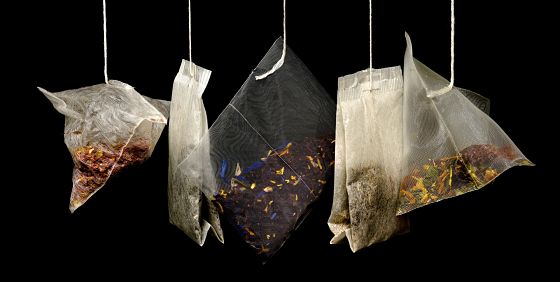I’ve been taking my own bags to the shops for years and consider myself fairly aware about what I consume, but I’m still horrified by how quickly the plastic packaging accumulates in my bins. I can see where I need to change, but I sometimes use busyness or disorganisation as an excuse. I’m signing up for Plastic Free July to refocus my efforts to reduce the mountain of plastic in my life.
Of course I’m concerned about the environmental impacts of all this plastic waste. Who wouldn’t be moved to act by images of turtles caught in plastic bags, or swirls of plastic bottles floating in the ocean? As well as the damage to our environment, plastic has health impacts for myself, my family and every person and animal that inhabits this earth.
The manufacture of plastics involves the use of a variety of chemicals. The dangers of many of these chemicals to human health are well known, but they continue to be used in everything from plastic containers to paper receipts. The chemicals used in the manufacture of plastics are known to be carcinogenic, toxic to the nervous system, damaging to our DNA and disruptive to hormones, including those essential for reproduction and metabolism. Every part of the lifecycle of plastics – manufacture, use and disposal – poses a risk to the health of humans, animals and the planet.
During manufacture, the chemical ingredients and waste products of plastic eventually find their way into the environment through the air, water and soil. Consider too, the workers exposed to these toxic substances in the manufacturing process.
In the ‘use’ part of their lifecycle plastics continue release chemicals. BPA is a well known, endocrine disrupting compound that is increasingly being replaced in plastic products, however, the safety of the chemicals it is replaced with is also questionable. Researchers detected oestrogenic compounds in over 450 common plastic products sampled, including those labelled BPA free. Exposure to sunlight, dishwashing and microwaves further accelerates the release of these chemicals. Plastics are also common in building materials, releasing toxic compounds for sometimes years after they are installed as they off gas. Again, the people who install these plastic materials are exposed to dust particles and gases as those plastics are heated.
Once discarded, plastics continue to wreak havoc on the environment. Most plastic is durable, but it does eventually degrade when exposed to mechanical forces, heat and UV radiation. Plastics break down into ever smaller pieces, eventually becoming microplastics (less than 5mm in diameter). Microplastics are particularly difficult to remove from the ocean, travelling vast distances and being mistaken for food by marine animals.
Chinese medicine emphases the connectedness of people with the heavens and the earth; health is found in balance and harmony with nature. The earth is probably the only habitable planet in a vast Universe – I believe we can all flourish and be well if we move towards respecting and nurturing this planet our home. We as individuals have limited power to make change; joining Plastic Free July is a small step to minimise our impact and promote a healthier world.
‘The environment is in us, not outside of us. The trees are our lungs, the rivers our bloodstream. We are all interconnected, and what you do to the environment, ultimately you do to yourself’
~ Ian Somerhalder
Single use bags and water bottles are easy enough to avoid, but here are some surprising things that contain plastic.
Chewing Gum
The main ingredient of chewing gum, the yummy sounding “gum base”, actually contains polyethylene, a plastic that’s also used to make plastic bottles and bags, and polyisobutylene, an ingredient in tyre inner tubes.
Tea Bags
The paper used to make most tea bags contains a thin layer of polypropylene to allow the bags to be heat sealed during manufacture. Some brands use bioplastic alternatives, but there are environmental consequences of these too.
Glitter
Glitter seems fun and harmless, but it is actually a microplastic. Most glitter is made up of aluminium and PET, a plastic. Glitter is also a common ingredient in cosmetics and self-care products.
Drink Cans
Aluminium drink cans are lined with a thin layer of plastic; without it, cans would react with the product inside and quickly corrode. The coatings vary depending on what’s in them; they may include epoxy, vinyl, acrylic, polyester, polypropylene or styrene. These compounds are estimated to be around 80% BPA.
